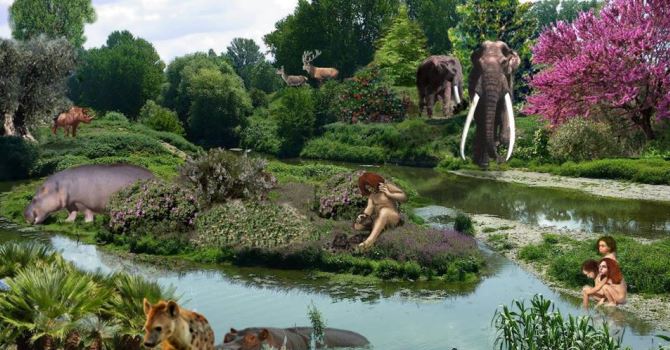Editorial
The Casal de 'Pazzi site covers an area of about 400 mq and preserves a portion of ancient watercourse, that, approximately 200,000 years ago, flowed just in the area where the museum was built.
The excavation of the Pleistocene deposit, carried out in the first half of the 1980s, brought to light many geological, paleontological and archaeological finds, through which it is possible, in the heart of the modern city, to imagine a disappeared prehistoric landscape, very unlike from the current one, characterized by massive fauna and groups of hunter-gatherers men.

In the museum you can see some of the over 4,000 finds found during the excavation: fossils of animals typical of very different environments from ours. Some of these are now extinct, others are still present on other continents, such as African tropical and equatorial zones. The remains of the straight-tusked elephant attract because of their size, as the tusks reach 4 m in length; there are also remains of rhino, hippo, aurochs, deer and fallow deer, hyenas, wolves, horses, wild boars and water birds.
The fossil flora is represented by leaves of Zelkova crenata, a sort of elm now widespread in the Caucasian area, but at the time widely present also in the Italian peninsula.
In addition, also stones chipped by Palaeolithic men and a fragment of human skull were discovered.
During the visit to the Museum the visitor can dive into the ancient Pleistocene landscape. Looking at the river bed, with the aid of suggestive virtual reconstructions, and through explanatory panels, he can learn the history of the deposit, the geological evolution of the area, the environmental and climatic changes and lifestyles during the Pleistocene.
The view of some displays in the exhibition hall, containing selected finds, allows visitors to see up close fossils and stone tools used by our ancestors and also to touch and manipulate objects realized through experimental archeology.
The Pleistocene Garden, located outside the museum area, lodges typical Pleistocene plants, that thus can be directly observed.
Dr Patrizia Gioia





































